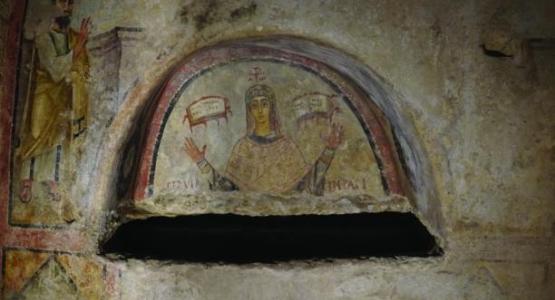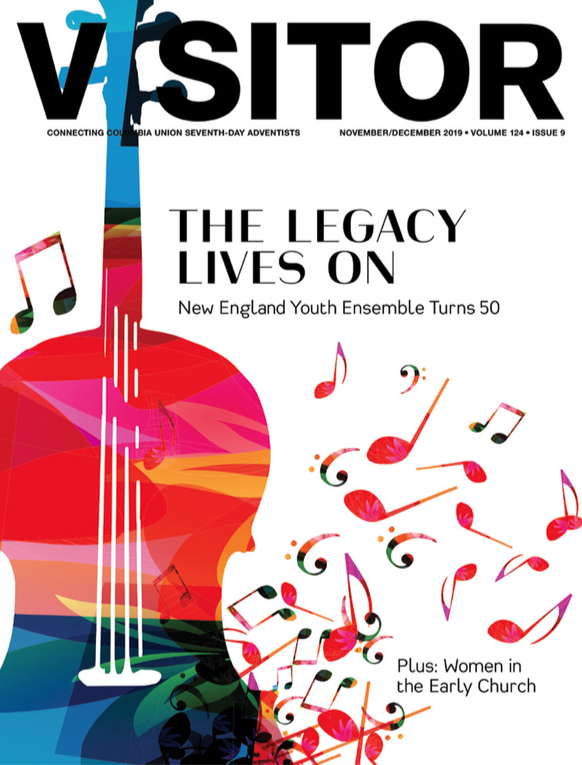
VIDEO: Archaeologists Uncover Clues About Women in Early Christianity: San Gennaro Catacomb
In the northern part of Naples, Italy, the Catacomb of San Gennaro started as a pagan burial place in the second century, and Christians began to use it around the third century. Over a 300-year period, as the church grew, they placed the remains of many local bishops and believers there. Like other early Christian catacombs, San Gennaro was decorated with frescoes and mosaics, some of which still remain visible on its walls and ceilings. In 2009 researchers found frescos portraying Bitalia and Cerula.
Each woman is shown with open arms and raised hands in a prayer-like position, a very common depiction in early Christian iconography. They are also presented with the “Chi-Rho” symbol (the first two Greek letters of the name “Christos” or Christ) above their heads. Cerula’s fresco is in better shape, and also includes the Greek letters Alpha and Omega (the beginning and the end). Another fresco at San Gennaro, a martyred male bishop, displayed in the same catacomb, also features this symbol above his head. These are the only two times this symbol is used in this catacomb.
What makes the women’s frescoes especially noteworthy is that in each of them, open books appear above both sides of their heads. The names of the Gospels—Mark, John, Luke, Matthew—are written on the pages of the books.
Also important is the fact that surrounding the Gospel books are tongues of fire. The Apostolic Constitutions, a fourth-century manual for clergy, describes the procedure for ordaining bishops. It says that the open Gospels should be held bydeacons over the head of the candidate. Other literary references of the same time period also mention this process, indicating its common practice. In addition, Palladius, the first Christian bishop of Ireland, wrote in AD 430 that the tongues of fire were a symbol of the descent of the Holy Spirit on the candidate, like the descent of the Holy Spirit on the apostles at Pentecost. Thus, the Gospels over the head of a person are a sign of the ordination of a bishop by the church, and the tongues of fire symbolize ordination by the Holy Spirit.
 Read and share these articles from the November/December Visitor:
Read and share these articles from the November/December Visitor:

Add new comment